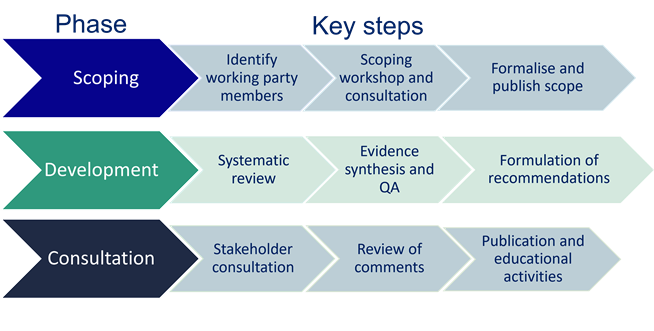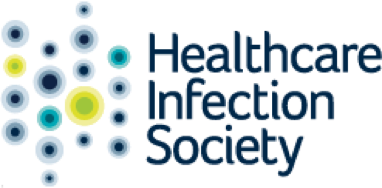Why does the Society produce guidelines?
The Society has a long history of providing expert guidance in IPC (infection prevention and control) and the management of HCAIs (healthcare associated infections), with the first working party on Operating Theatre building regulations formed in 1982. Since then, the Society has convened or worked collaboratively on over 70 working parties resulting in the publication of over 40 working party reports.
The production and communication of expert-led, evidence-based guidance is a part of our current strategic plan and is key to our mission of providing healthcare professionals with the information, evidence, and skills they need to prevent and control HCAIs.
In March 2015, the Society received NICE (National Institute for Health and Care Excellence) accreditation for its guideline methodology which continued to July 2024 when NICE closed its accreditation programme. Throughout the accreditation period HIS guidelines conformed to indicators of quality specified in the Appraisal of Guidelines for Research & Evaluation Instrument (AGREE II) for evaluating guideline development methodology and reporting. Our guideline development process continues to reflect the AGREE II indicators of quality. A central feature of the process is the system for assessing evidence and formulating recommendations for clinical practice developed by the Grading of Recommendations Assessment, Development and Evaluation (GRADE) working group.
How does the Society complete guidelines?
Between 2017 and 2020, the Society created three positions to support the working parties in development of guidelines and guidance, and perform evidence synthesis. We have now moved to a more collaborative model of working, where our guidelines team of methodological experts (Dr Aggie Bak and Dr Moira Mugglestone) work closely with each multi-disciplinary working party to assess the evidence and prepare recommendations for clinical practice.
How is the decision to develop a guideline or guidance made?
Together with Council, the Guidelines Committee and guidelines team work on three streams of production: guidelines and guidance that require updating, new guidelines topics proposed by members and topics proposed by our committees.
All topics are ranked based on clinical priority. The length of time required to develop a guideline (typically 18 months) and impact of the length of the process on clinical priority, as well as the quantity and quality of evidence are also considered. We also assess the availability of working party members and the capacity of the team to develop any new topics.
The guidelines team maintain a work schedule and make recommendations to Council based on clinical need, capacity when a guideline topic is proposed and whether external documents such as HTMs (Health Technical Memoranda) or guidelines are in progress.
What happens next?
Once a guideline topic has been identified for development, the Guidelines Committee will identify potential working party chairs based on expertise in the topic area and previous experience on a working party.
Once a working party chair is in post, a scoping exercise is performed for the topic, and this concludes with either a public consultation or a scoping workshop. The remainder of the working party are then appointed whilst ensuring it is multi-disciplinary and includes lay representation. Once the scope is finalised, it is published on PROSPERO.
The second phase of guideline development includes the systematic review process, evidence synthesis, quality assurance and formulation of the recommendations.
The final phase involves a two-stage consultation process involving the society’s committees and finally a public consultation (concurrently with blind journal peer review). The working party hold a final meeting to consider and respond to comments from the public consultation and journal review.
During the consultation process, the guidelines team and working party start preparing educational resources such as a one-page summary and summary videos.



 HIS guideline development process
HIS guideline development process